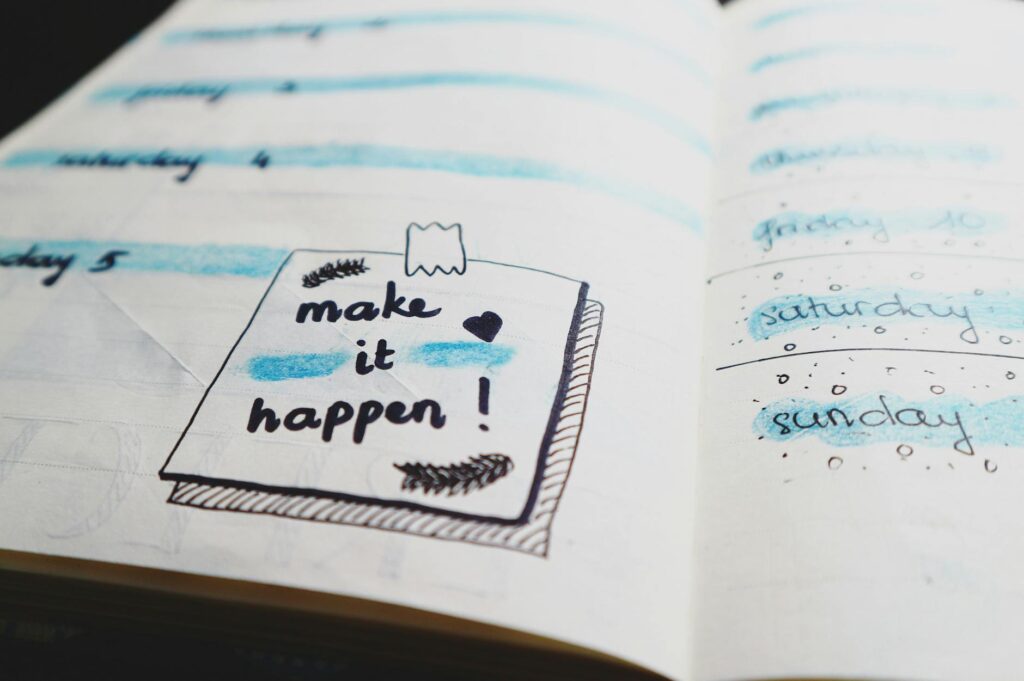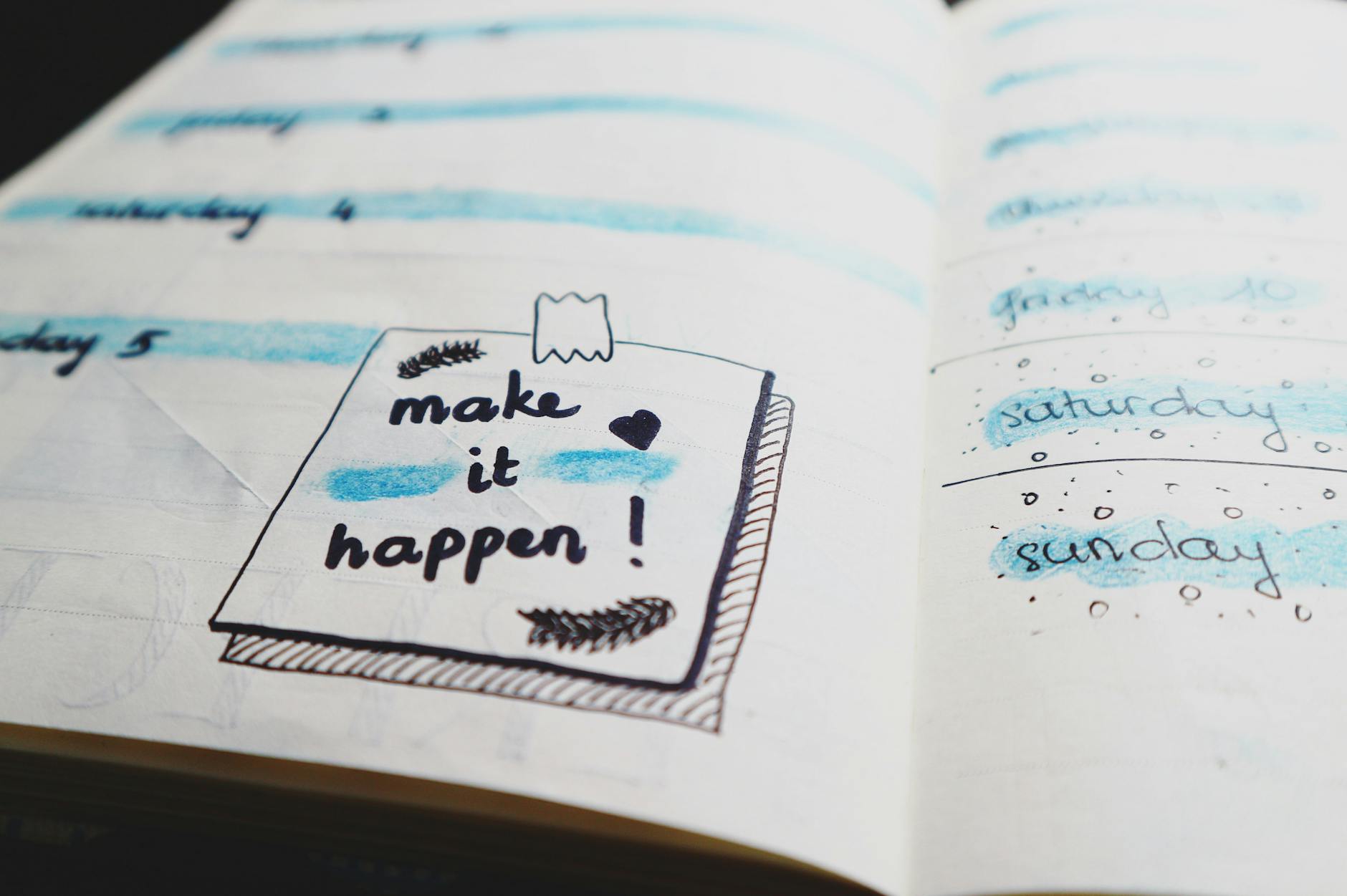What is daily goal planner?

What is daily goal planner?
Daily goal planners are essential tools that can significantly enhance your productivity and help you achieve your personal aspirations. Imagine waking up each day with a clear roadmap that guides you toward your most important objectives. This is where a daily goal planner comes into play. It organizes your tasks in a way that not only helps you stay focused but also ensures that you’re making steady progress toward your long-term goals.
Understanding Daily Goal Planners
Daily goal planners are structured systems for outlining and tracking your daily objectives. They serve as a framework to help you prioritize tasks, allocate time effectively, and monitor your progress.
What is a Daily Goal Planner?
A daily goal planner is typically a physical notebook or a digital app designed to help you set specific goals for each day. Unlike traditional planners that may just include appointments or deadlines, a daily goal planner emphasizes actionable tasks that are aligned with your larger goals. Components often include:
- Daily Objectives: Clear and concise goals you want to accomplish for the day.
- Priority Tasks: Items you must focus on first.
- Time Blocks: Suggested times for completing tasks.
- Reflection Space: Areas to note what went well or what needs adjustment.
By using a daily goal planner, you can sharpen your focus on what truly matters and manage your time more effectively.
Benefits of Using a Daily Goal Planner
The benefits of adopting a daily goal planner are significant. Here are some of the main advantages:
- Improved Focus: By outlining your goals for the day, you reduce distractions and increase your ability to concentrate on your tasks. This focus leads to higher quality work.
- Enhanced Productivity: Setting specific, actionable goals helps you make the most out of your time. You can achieve more in less time when you know exactly what you need to do.
- Better Time Management: A daily goal planner encourages you to allocate your time wisely. By estimating how long each task will take, you can avoid overcommitting yourself.
- Increased Motivation: Seeing your progress in writing can be incredibly motivating. It provides a sense of accomplishment that fuels your desire to keep moving forward.
If you’re curious about the broader impacts of goal setting, you might find insights in articles discussing the importance of setting goals.
How to Create an Effective Daily Goal Planner
Creating a daily goal planner that works for you involves several straightforward steps.
Setting SMART Goals
SMART is an acronym that stands for Specific, Measurable, Achievable, Relevant, and Time-bound. When setting your daily goals, ensure they meet these criteria:
- Specific: Clearly define what you want to achieve.
- Measurable: Include criteria to track your progress.
- Achievable: Set realistic goals that can be accomplished within the day.
- Relevant: Ensure your goals align with your long-term objectives.
- Time-bound: Assign a timeframe for completion.
For example, instead of saying, “I want to be healthier,” a SMART goal would be, “I will walk for 30 minutes every day this week.”
Choosing Your Daily Priorities
Identifying your top priorities each day is crucial. Here are some strategies to help:
- The Eisenhower Matrix: This method helps you categorize tasks into four quadrants based on urgency and importance.
- ABC Method: Label your tasks as A (high priority), B (medium priority), or C (low priority) to clarify what needs your immediate attention.
- Daily Review: Each evening, take a moment to review what you’ve accomplished and outline your top three priorities for the next day.
These strategies can help you tackle the most pressing tasks without feeling overwhelmed.
Reviewing and Adjusting Goals
Reflection is an important part of the goal-setting process. At the end of each day, take time to review what you accomplished. Ask yourself:
- What worked well today?
- What didn’t go as planned?
- How can I adjust my approach for tomorrow?
This ongoing review process ensures that you adapt and refine your goals, making your daily planner a dynamic tool for growth.
Tips for Maximizing Your Daily Goal Planner
To get the most out of your daily goal planner, consider implementing these actionable tips.
Incorporating Time Blocks
Time blocking is a technique where you allocate specific chunks of time for each task. This can help you maintain focus and avoid multitasking. Here’s how you can incorporate it:
- Identify Tasks: List all tasks you want to accomplish.
- Estimate Duration: Decide how long each task will take.
- Schedule Blocks: Assign time slots in your planner for each task, allowing for breaks in between.
By visually structuring your day this way, you create a clear roadmap for productivity.
Maintaining Flexibility
Life is unpredictable, and flexibility in your planning can make a significant difference. Here’s how to stay adaptable:
- Buffer Time: Leave some unscheduled time in your planner for unexpected tasks or interruptions.
- Reassess Priorities: If something urgent comes up, reassess your priorities and adjust your goals as necessary.
- Stay Positive: Embrace changes with a positive mindset, viewing them as opportunities for growth rather than setbacks.
Flexibility ensures you remain committed to your goals without being rigid in your approach.
Conclusion
In summary, a daily goal planner is a powerful tool that can significantly enhance your productivity and efficiency. By setting SMART goals, identifying priorities, and incorporating strategies like time blocking while maintaining flexibility, you can create a personalized planner that works best for you.
Starting today with a daily goal planner can be a transformative step toward achieving your dreams and managing your time effectively. So, why not give it a try? Transform your daily routines and watch how your productivity soars!

Photo by Bich Tran